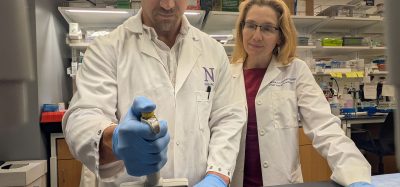Eco-friendly grocery swaps could cut emissions by more than a quarter, new study finds
Posted: 30 May 2024 | Leah Hockley | No comments yet
A new study of the environmental impacts of a country’s food purchasing behaviour has highlighted the positive environmental impact of consumers making simple grocery swaps with like-for-like products.


Switching food and drink purchases to very similar but more environmentally friendly alternatives could reduce the greenhouse gas (GHG) emissions from household groceries by more than a quarter (26 percent), according to a new Australian study from The George Institute for Global Health and Imperial College London published in Nature Food.1
Making bigger grocery changes – like swapping a frozen meat lasagne for the vegetarian option – could push the reduction to as much as 71 percent.
To make this happen will require on-pack labelling of greenhouse gas emissions for every packaged food product, so that consumers can make informed choices.
This is the most detailed analysis ever conducted on the environmental impacts of a country’s food purchasing behaviour, involving comprehensive data on greenhouse gas emissions and sales for tens of thousands of supermarket products, typical of the Western diet of many countries globally.
Lead author and epidemiologist Dr Allison Gaines, who conducted the analysis for The George Institute and Imperial College London, said: “Dietary habits need to change significantly if we are to meet global emissions targets, particularly in high-income countries like Australia, the UK and US.
“But, while consumers are increasingly aware of the environmental impact of the food system and are willing to make more sustainable food choices, they lack reliable information to identify the more environmentally friendly options.”
Researchers calculated the projected emissions of annual grocery purchases from 7,000 Australian households using information on ingredients, weights and production life cycles in The George Institute’s FoodSwitch database and global environmental impact datasets. More than 22,000 products were assigned to major, minor and sub-categories of foods (e.g. ‘bread and bakery’, ‘bread’ and ‘white bread’, respectively) to quantify emissions saved by switching both within and between groups.
Making switches within the same sub-categories of foods could lead to emission reductions of 26 percent in Australia, equivalent to taking over 1.9 million cars off the road.2 Switches within minor categories of foods could lead to even bigger emission reductions of 71 percent.
“The results of our study show the potential to significantly reduce our environmental impact by switching like-for-like products. This is also something that consumers in the UK could, and would probably like to, do if we put emissions information onto product labels,” said Dr Gaines.
Dr Gaines added that the switches would not compromise food healthiness overall: “We showed that you can switch to lower emission products while still enjoying nutritious foods. In fact, we found it would lead to a slight reduction in the proportion of ultra-processed foods purchased, which is a positive outcome, because they’re generally less healthy,” she said.
The purchase analysis also showed that meat products contributed almost half (49 percent) of all greenhouse gas emissions, but only 11 percent of total purchases. Conversely, fruit, vegetables, nuts and legumes represented one quarter (25 percent) of all purchases, but were responsible for just five percent of emissions.
It is estimated that around one third of global greenhouse gas emissions are attributable to the food and agriculture sector, and the combined health and environmental costs of the global food system are estimated to be $10 trillion to $14 trillion (£8 trillion to £11 trillion) per year.3,4,5 More than 12 million deaths per year could be prevented if the system transitioned to deliver healthy, low-emission diets.3
Professor Bruce Neal, Executive Director at The George Institute Australia and Professor of Clinical Epidemiology at Imperial College London, said that, as a global community, we are taking too long to improve the sustainability of the food system, endangering the prospect of a net-zero future.
“There is currently no standardised framework for regulating the climate or planetary health parameters of our food supply, and voluntary measures have not been widely adopted by most countries. This research shows how innovative ways of approaching the problem could enable consumers to make a real impact,” he said.
“With this in mind, we have developed a free app called ecoSwitch, currently available in Australia, which is based on this research. Shoppers can use their device to scan a product barcode and check its ‘Planetary Health Rating’, a measure of its emissions shown as a score between half a star (high emissions) to five stars (low emissions),” Professor Neal concluded.
The George Institute plans to extend the ecoSwitch algorithm to integrate other environmental indicators, such as land use, water use and biodiversity, and to introduce the tool to other countries.
“While ecoSwitch is a much-needed first step in providing environmental transparency for grocery shoppers, the vision is for mandatory display of a single, standardised sustainability rating system on all supermarket products,” concluded Professor Neal.
Related topics
Environment, Labelling, Packaging & Labelling, Research & development, retail, Supermarket, Sustainability, The consumer
Related organisations
Imperial College London, The George Institute for Global Health









